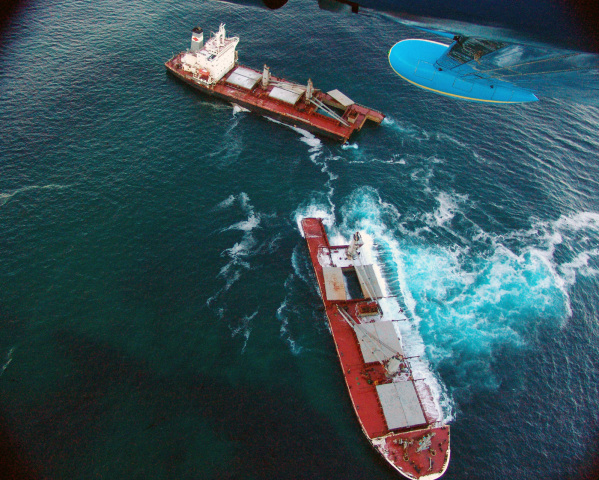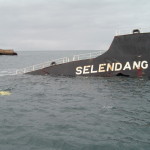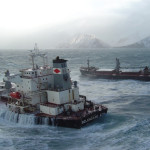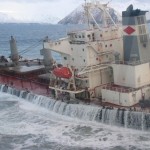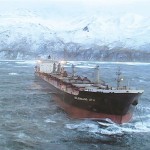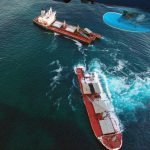Selendang Ayu
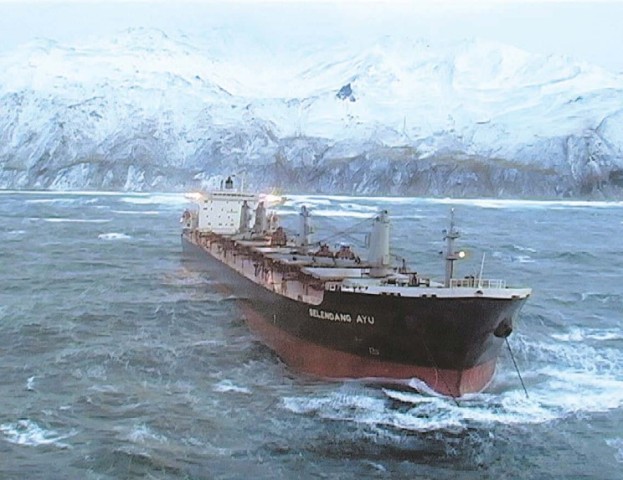
On November 28, 2004, the 225 meter long bulk carrier Selendang Ayu departed Seattle Washington bound for Xiamen, China with a cargo of 60,200 tons of soybeans. Along with the cargo, her fuel tanks were nearly completely full with some 1,100 tons of fuel oil for the trip to China.
For several days the voyage was proceeding without incidnet. The Selendang Ayu was making good progress towards China, but the progress had slowed due to the rough conditions. The crew had reduced the vessel speed and it looked like the vessel may not arrive in China on schedule for December 17th.
On December 6, the Selendang Ayu had passed through Unimak Pass and some 100 miles from Dutch Harbor, Alaska. Her progress was still being hindered by bad weather. Around noon, the main engine suffered a breakdown. The crew shut down the engine immediately and inspected it for the source of the problem. By that evening, they found that there was breakdown in one of the cylinders. The crew isolated the cylinder and tried to restart the engine. They goal was to proceed to Dutch Harbor for repairs. However, the crew were unable to get the engine restarted. The bulk carrier was adrift and was being driven in the direction of Bogoslof and Unalaska Islands.
The crew worked through the night and found the engine had more damage than previously thought. Four cylinders had cracked piston rings and need to be replaced. The crew tried to replace the most damage and restart the engine, but again the engine failed to start. Conditions continued to worsen with winds reaching 35 mph and waves reached 15 feet. The Selendang Ayu continued to drift towards the islands at a faster rate.
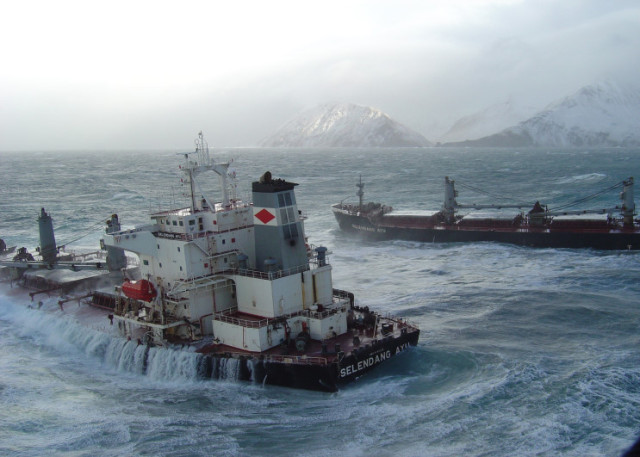
Conditions continued to worsen the following hours. The winds were now whipping the the vessel at 50 mph and waves increased to 25 feet. The crew had to stop work on the engine as the bulk carrier was rolling. The crew began to take steps in case the vessel would go aground. The fuel was transferred to the inboard tanks. Fortunately, the Coast Guard cutter Alex Haley arrived on scene and a short time later the tug Sidney Foss arrived. The tug was able to attach a line to the Selendang Ayu, but it could only slow down the drift.
The bulk carrier safely past Bogoslof Island and another tug was requested from Dutch Harbor. The two tugs would be able to turn the Selendang Ayu into the wind and then proceed to pull it away from Unalaska Island. On the morning of December 8, the second tug arrived on scene. A short time later, the towline parted from the Alex Haley. The tugs attempted to re-establish the towline, but conditions made it impossible.
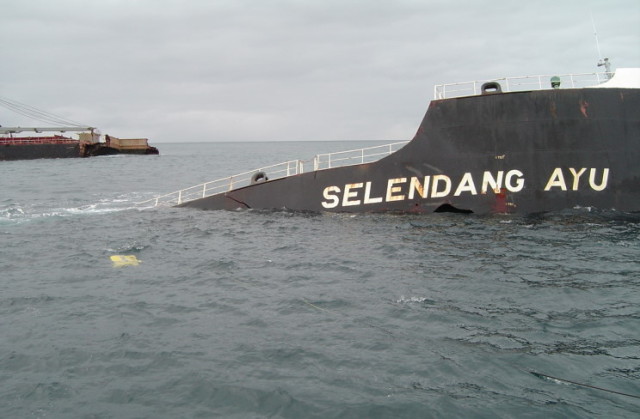
The crew on the Selendang Ayu decided to drop anchor as the vessel was now in shallow waters. The anchor stopped the drift for an hour, but the wind increased and the bulk carrier continued its drift towards shore. Two Coast Guard helicopters were dispatched to airlift the crew off the Selendang Ayu. The first helicopter arrived and lifted 9 crewmen. The second was able to pickup another 9 crew and safely landed them ashore.
Meanwhile the remaining 8 crew continued to work on the engine when the Selendang Ayu ran aground. With the bulk carrier aground, it quickly began to take on water. The Selendang Ayu master requested for immediate evacuation of the remaining crew on board. Two Coast Guard helicopters headed back to the vessel to pickup the remaining crew. The first helicopter to arrive began rescue operations. It had lifted all except the master of the vessel and the Coast Guard rescue swimmer from the deck when a large wave smashed against the hull. The spray blasted over the helicopter causing its engine to stall. The helicopter crashed into the sea and sank. The second helicopter who was still on scene began rescue operations. They were able to rescue the three Coast Guard men and one of the crew from the Selendang from the water. The remaining six men from the Selendang drowned in the crash.
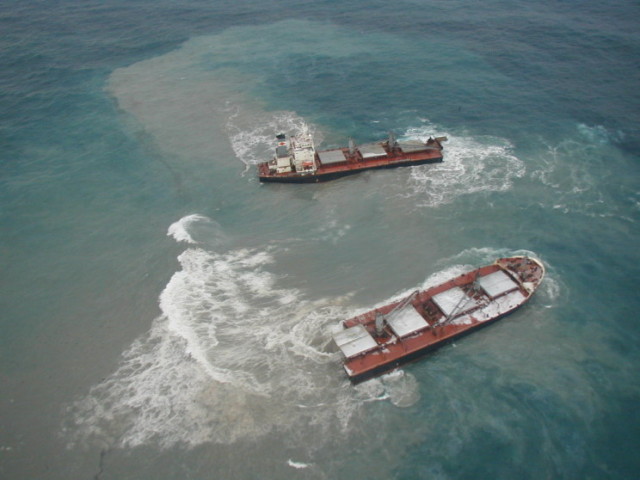
An hour later, the Selendang Ayu broke in two. One of the fuel tanks ruptured spilling over 40,000 gallons of fuel into the sea. The following days after the grounding, a total of 350,000 gallons of fuel oil and diesel fuel spilled out from the vessel. The 60,000 tons of soybeans on board also spilled into the Bering Sea.
In 2009, state and federal authorities settled claims with the owner and operator of the Selendang Ayu. The company paid a fine of $9 million (US) for the spill and over $102.5 million (US) to cover the cleanup costs resulting from the spill and removing the remaining fuel on board the wreck.
